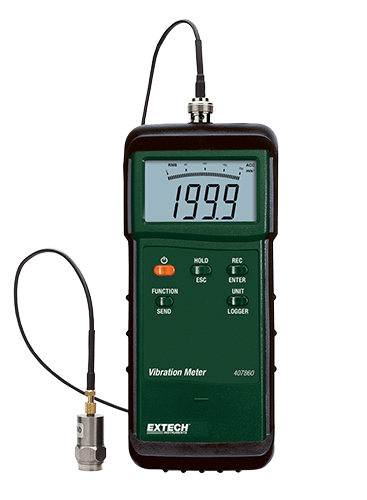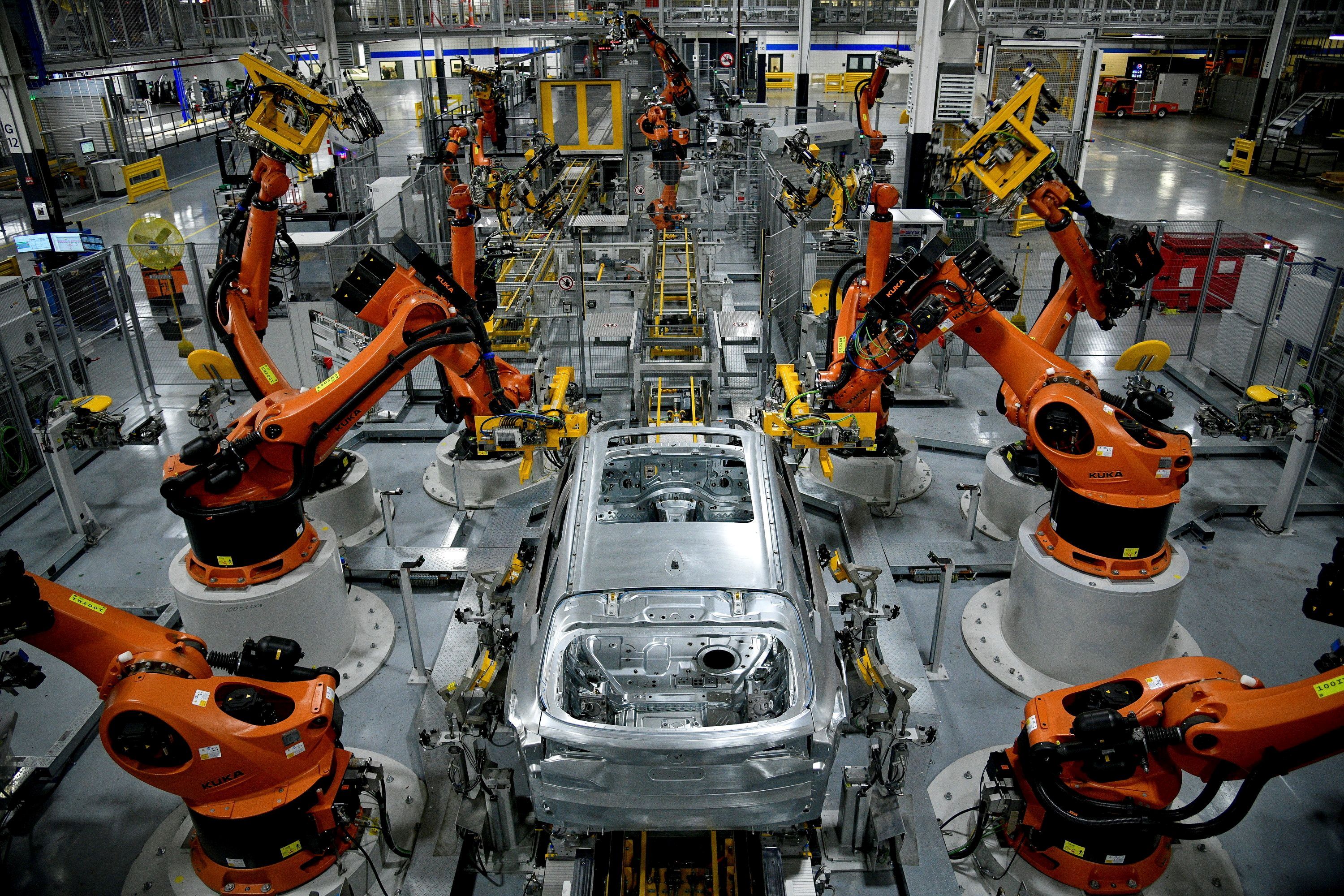Have you considered how integral vibration meters are in your industry? How frequently do you ensure that your vibration measurement instruments provide accurate readings to avert potential risks and inefficiencies? Let’s find out with us through this article.
1. Introduction
1.1 Understanding vibration meters and the critical role of calibration across industries
Vibration meters are crucial tools used in various industries to monitor machine and structural vibrations. They provide essential data—such as amplitude, frequency, and velocity—necessary for evaluating equipment health, identifying irregularities, and diagnosing potential problems. In sectors like manufacturing, construction, transportation, energy, and healthcare, measuring vibrations is key to maintaining efficient and safe operations.

EXTECH 407860 Heavy Duty Vibration Meter
Over time, even top-tier vibration meters may become less accurate due to wear and environmental influences. Therefore, regular calibration is vital. Calibration ensures that these instruments provide precise readings by aligning them with recognized standards. Without consistent calibration, data reliability can decline, leading to expensive mistakes, hazardous conditions, and possible equipment breakdowns.
1.2 The imperative of calibration for accuracy and efficiency in diverse industries
Calibration is not merely a technical requirement; it is a vital process that upholds the operational safety and efficiency of machinery across various industries. It facilitates early detection of deviations, preventing expensive repairs and downtime. Whether operating in high-risk sectors like energy or fast-paced environments such as manufacturing, ensuring the precision of vibration meters can extend equipment lifespan, optimize performance, and minimize risks to both personnel and assets.
2. Vibration Meters: Definition and Structure
2.1 Understanding Vibration Meters
A vibration meter is a portable instrument designed to assess oscillations in machinery and structures. It quantifies key parameters such as amplitude, frequency, and velocity, providing essential data for evaluating equipment health and diagnosing potential issues.
2.2 Core Components of a Vibration Meter
- Accelerometer (Vibration Sensor): Detects mechanical vibrations and converts them into electrical signals.
- Signal Processing Unit: Analyzes the electrical signals from the accelerometer to extract meaningful vibration data.
- Display Interface: Presents the processed data in a user-friendly format for analysis.
2.3 Operating Principle of a Vibration Meter
The accelerometer senses mechanical vibrations and transforms them into electrical signals. These signals are then processed by the signal processing unit to derive accurate vibration measurements, which are subsequently displayed on the interface for user interpretation.
3. Calibration of vibration meters in specific industries
3.1 Manufacturing Sector
Application of Vibration Meters:
Vibration meters are essential for monitoring machinery health on production lines, facilitating early detection of mechanical issues, preventing unexpected breakdowns, and minimizing operational downtime.

BMW manufacturing facility in Greer, South Carolina, U.S.
Calibration Requirements:
Regular calibration is crucial to maintain measurement accuracy, especially when assessing vibrations from large-scale industrial equipment operating under varying conditions.
Benefits of Calibration:
- Enhances machinery efficiency.
- Lowers maintenance expenses.
- Extends equipment lifespan.
3.2 Construction Industry
Application of Vibration Meters:
Utilized to assess the stability of structures such as bridges, buildings, and other infrastructure, as well as to monitor vibrations resulting from heavy construction activities.
Calibration Requirements:
Ensures precise measurement of vibration levels in challenging environments, accommodating a wide range of frequencies encountered during construction operations.
Benefits of Calibration:
- Reduces the risk of structural damage.
- Ensures compliance with safety standards.
3.3 Transportation Sector
Application of Vibration Meters:
Employed to evaluate the stability and performance of vehicles—including trains, trucks, and aircraft—as well as infrastructure like bridges and railways.
Calibration Requirements:
Accurate calibration is necessary to measure a broad spectrum of vibration frequencies, ensuring the reliability and safety of transportation systems.
Benefits of Calibration:
- Improves passenger and operator safety.
- Decreases the likelihood of operational failures.
3.4 Energy Sector
Application of Vibration Meters:
Critical for monitoring equipment such as wind turbines, generators, and other machinery within power plants to ensure optimal performance.

Calibration Requirements:
Essential for detecting both low and high-frequency vibrations, aiding in the early identification of potential equipment malfunctions.
Benefits of Calibration:
- Prevents unexpected equipment failures.
- Enhances overall plant efficiency.
- Prolongs the operational life of machinery.
3.5 Healthcare Industry
Application of Vibration Meters:
Used to verify the performance of medical devices that rely on precise vibrations, ensuring their accuracy and reliability in patient diagnostics and treatment.
Calibration Requirements:
High-precision calibration is vital to prevent errors in medical measurements, directly impacting patient care quality.
Benefits of Calibration:
- Maintains the integrity of medical treatments.
- Prevents malfunctions in critical healthcare equipment.
4. Benefits of vibration meter calibration across various industries
Regular calibration of vibration meters is crucial for keeping operations smooth and reliable across many industries. It ensures accurate readings, helping companies detect mechanical problems early and avoid unexpected breakdowns. This not only improves safety but also helps meet industry regulations while saving costs by reducing the risk of major equipment failures.
Industries like chemicals, food and beverage, textiles, mining, robotics, and electronics rely on precise vibration monitoring to improve efficiency and performance. By maintaining a consistent calibration schedule, businesses in these sectors can protect their assets, enhance productivity, and keep their workers safe.
Ensuring precise vibration measurements is fundamental to achieving operational efficiency across various industries. By calibrating your instruments regularly, you maintain their reliability, thereby protecting both your equipment and business operations. For guidance on selecting the most suitable tools for your vibration measurement requirements, refer to our comprehensive review of the Top vibration meters for industrial equipment.
